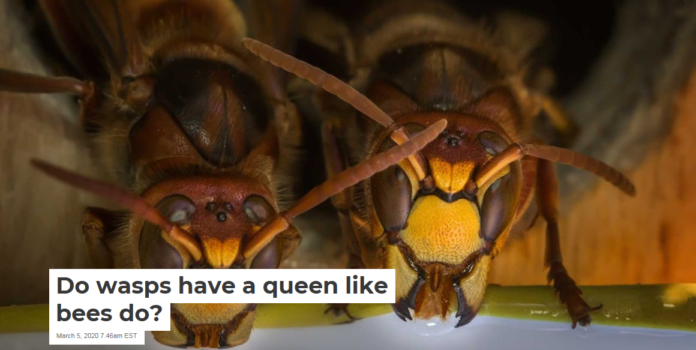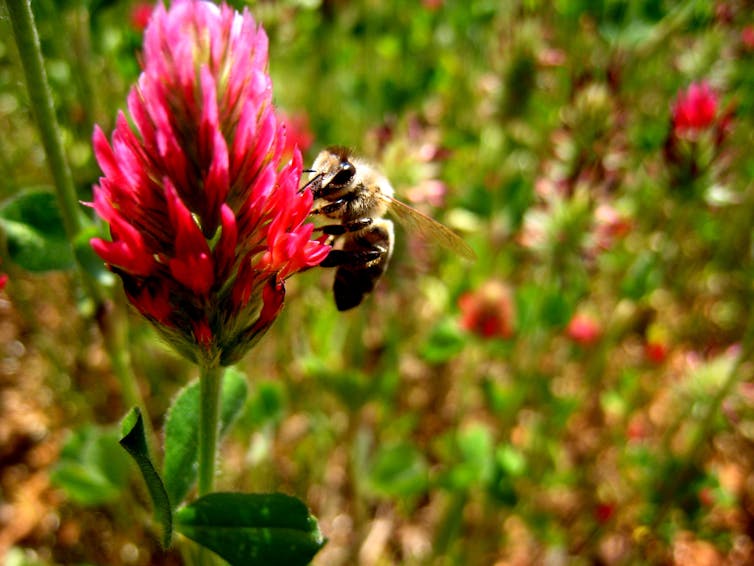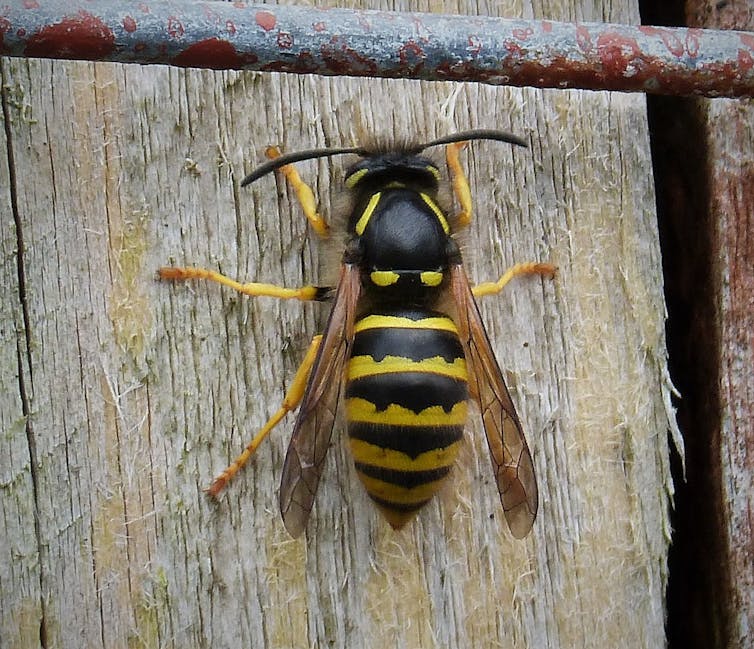

Caralyn Zehnder, University of Massachusetts Amherst

Curious Kids is a series for children of all ages. If you have a question you’d like an expert to answer, send it to CuriousKidsUS@theconversation.com.
Is there a queen wasp? – Gabriel H., age 7, Providence, Rhode Island
That’s a good question, because it’s complicated.
A queen bee is a female bee that is the only bee in the hive to lay eggs. She is also the largest bee in the hive.
If you think that wasps have queens, as bees do, you are right. Wasps and bees are similar insects – they are both in the insect group called Hymenoptera, meaning their wings are clear and thin like a membrane. So it makes sense that they would share this kind of social structure.
But if you think that wasps do not have queens, then you are also right! Some wasp species have queens and others don’t.
The same is true for bees, actually: Not all bees live in a hive with a queen.

Ezra S F/flickr, CC BY
As an ecologist, I study how animals like bees and wasps interact with each other and their environment.
Wasp and bee species with queens are called social insects. They live together in large groups ranging from 100 to over 50,000 and work together to raise their young. Only one or a few members of the group lay eggs – the queens.
The others watch over the eggs and hunt for food like juicy caterpillars, which is what many wasp babies like to eat. The remaining bees and wasps in the hive do chores such as making wax and cleaning out the hive.
Paper wasps, hornets and yellow jackets are all social wasps. Honey bees and bumblebees are both social bee species.

Gail Hampshire/Wikimedia, CC BY
Most bees and wasps, however, are solitary insects who live alone. One female will lay her eggs and bring her offspring food, raising them until adulthood.
Though many people fear bees and wasps because they can sting, both are important for a healthy planet. Bees pollinate many flowers, including crops people eat, such as apples and almonds. And by hunting, wasps help keep down populations of pests like caterpillars and flies.
Unfortunately, these useful insects are in decline worldwide. Pesticides, which are chemicals used to kill pest insects, also kill necessary bugs like bees and wasps. There are also fewer places for wasps and bees to live these days because the cities and farmland that serve humans occupy ever more of their habitat.
If you want to help wasps and bees, make sure your family doesn’t use pesticides in your yard. Planting native plants that provide pollen and nectar will aid these amazing insects, too.
Hello, curious kids! Do you have a question you’d like an expert to answer? Ask an adult to send your question to CuriousKidsUS@theconversation.com. Please tell us your name, age and the city where you live.
And since curiosity has no age limit – adults, let us know what you’re wondering, too. We won’t be able to answer every question, but we will do our best.![]()
Caralyn Zehnder, Lecturer in Biology, University of Massachusetts Amherst
This article is republished from The Conversation under a Creative Commons license. Read the original article.



















